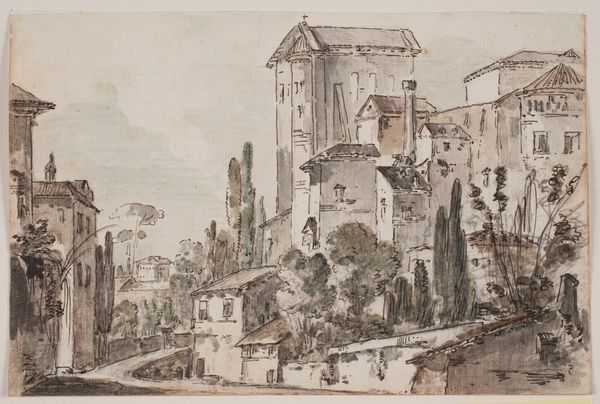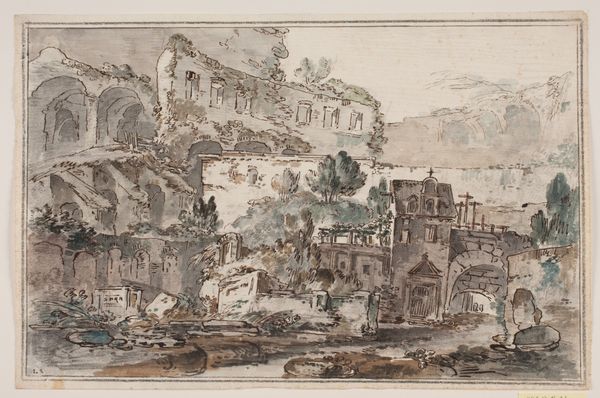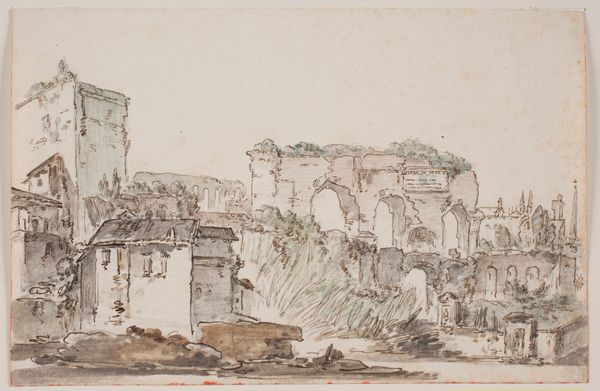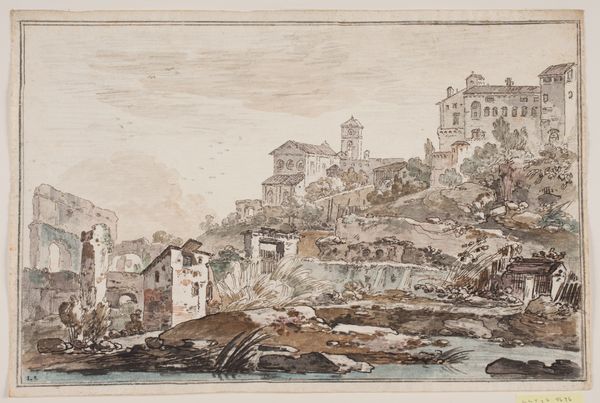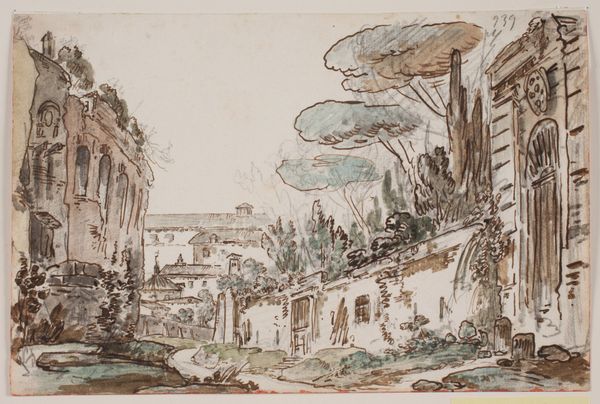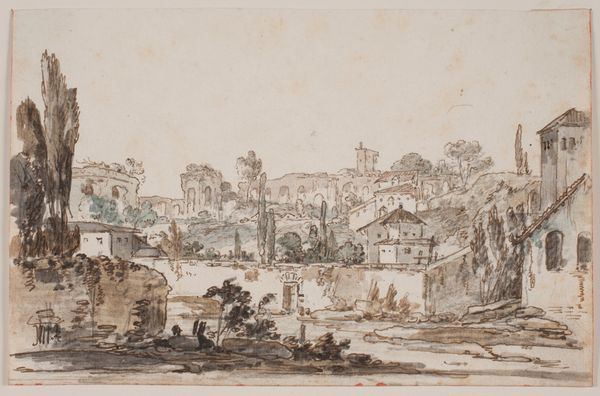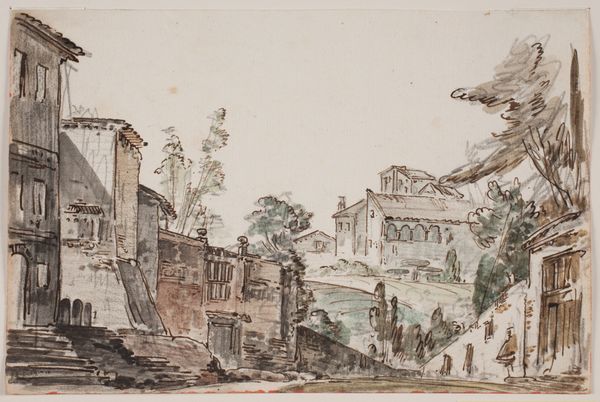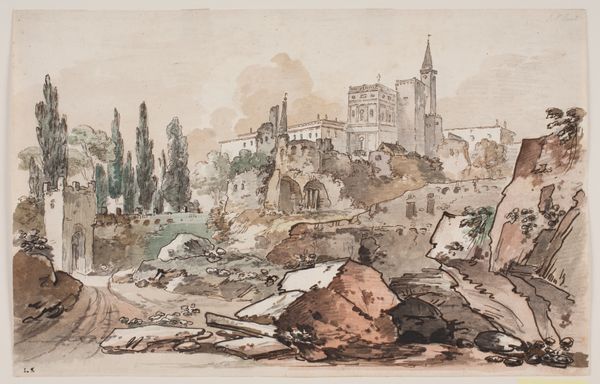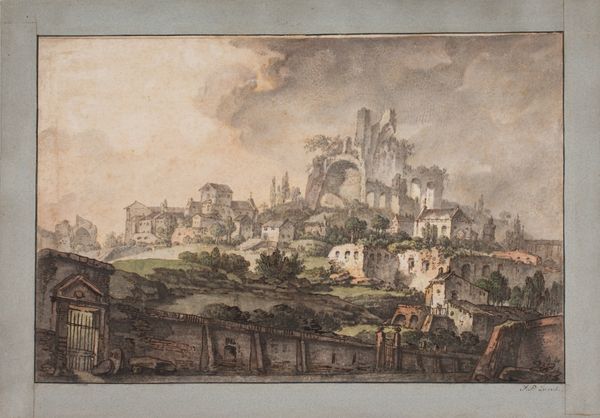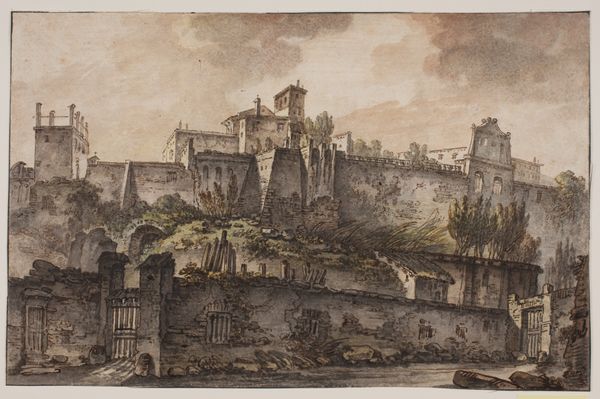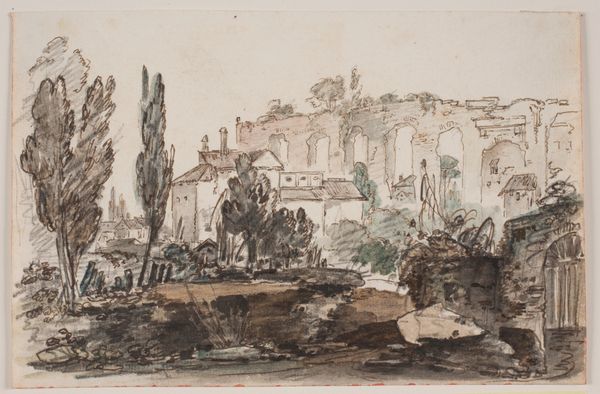
drawing, plein-air, watercolor, ink
#
drawing
#
neoclacissism
#
ink painting
#
plein-air
#
landscape
#
watercolor
#
ink
#
cityscape
#
watercolor
Dimensions: 140 mm (height) x 213 mm (width) (bladmaal)
Curator: This ink and watercolor drawing, titled “Romersk” prospekt, by Jens Petersen Lund, was created sometime between 1730 and 1793. What stands out to you about this cityscape? Editor: The somber mood and subdued palette speak of decay and forgotten grandeur. A romantic vision, almost melancholic. I’m immediately drawn to the crumbling infrastructure contrasted against the burgeoning foliage. Curator: Right, and Lund’s choice of materials — ink and watercolor— speak to the accessibility of artmaking for emerging artists in that era, even plein-air creation, since we know he was invested in drawing outside the studio. This would certainly reflect his engagement with Neoclassicism and its renewed interest in Roman antiquity. Editor: I'm fascinated by the layering of histories visible here, aren't you? The ancient Roman structures as ruins, overlaid with later architectural interventions and traces of daily life, point towards histories of power and erasure embedded within the urban landscape. Curator: Exactly. Think about the physical act of layering watercolor washes to achieve that effect, to build up density. It mirrors the way societies build upon earlier infrastructures, reshaping space according to the needs—and the availability of resources!—at hand. Editor: Absolutely, and let’s not forget the absence of people. These silent ruins invite contemplation on empire, decline, and the relentless march of time and invites us to consider whose voices have been privileged in its historical narrative, and whose have been deliberately silenced? Curator: The ghostly architectural rendering emphasizes both the fragility of human structures and their relationship to the natural world, reflecting the economic value of raw materials extracted to construct monumental buildings. And later, the reuse of those materials when the monuments are abandoned. Editor: And it challenges our perception of the past. By showing Rome as it was—already decaying, already being absorbed back into the land—Lund makes a powerful comment about legacy and impermanence, as well as to the political shifts in power reflected by architecture in this landscape.. Curator: Thinking about Lund’s technique in the creation of this landscape gives me a real appreciation of the skills of the artisan's ability to generate meaning! Editor: Absolutely! Viewing "Romersk" prospekt is an entry point to interrogating dominant narratives surrounding historical significance and whose story we see preserved in spaces like these.
Comments
No comments
Be the first to comment and join the conversation on the ultimate creative platform.
